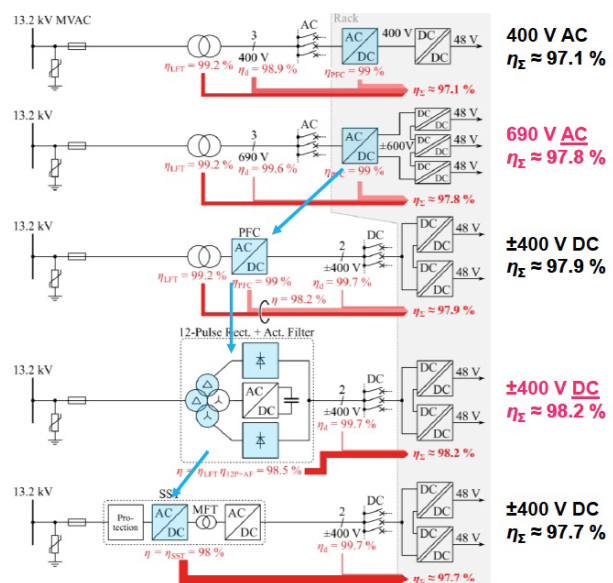Aim
This activity aims at addressing the power distribution in DC, from the connection to the utility ac grid, distribution throughout the DC with dc, down to the supply in the rack for the loads.
This follows recent trends at the DC power supply domain where moving from ac to dc distribution presents various advantages such as:
• Improved efficiency
• Reduced number of conversions
• Integration of batteries
• Integration of DC sources (e.g., PV)
• Increased reliability

Technological roadmap
For the implementation of this activity, the following steps will be undertaken:
Phase 1
- Design optimization of power electronics converters for direct current distribution system for DCs, including (a) modelling, simulation, and benchmark of topologies and (b) design optimization of the power hardware ac-dc and dc-dc converters
- Power hardware and control software development and validation, including (a) design of the demonstrator ac-dc and dc-dc converters, and (b) control system design and validation with both offline and real-time simulations.
Phase 2
Commissioning and experimental performance validation including (a) laboratory commissioning and testing and (b) field (EcoCloud Test Facility) testing
Expected outcomes
Two main technological solutions will be developed and demonstrated in two interlinked parts:
(a) a galvanically isolated power converter for the main supply, from 400Vac mains to a direct current power distribution network of 800Vdc (±400Vdc), and

(b) a dc-dc rack power supply from 800Vdc (±400Vdc) to 48Vdc/12Vdc for the individual server racks.
In both cases, the main design optimization criterion is the efficiency of the solution, followed by power density, considering that space is at a premium cost in DC. Galvanic isolation is mandatory for safety and will be implemented with high-frequency operated transformers.
